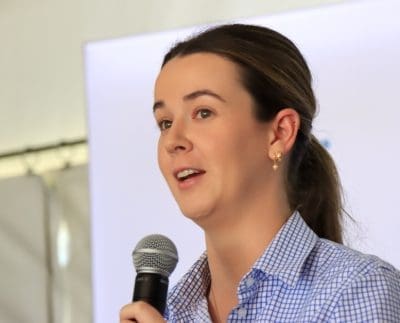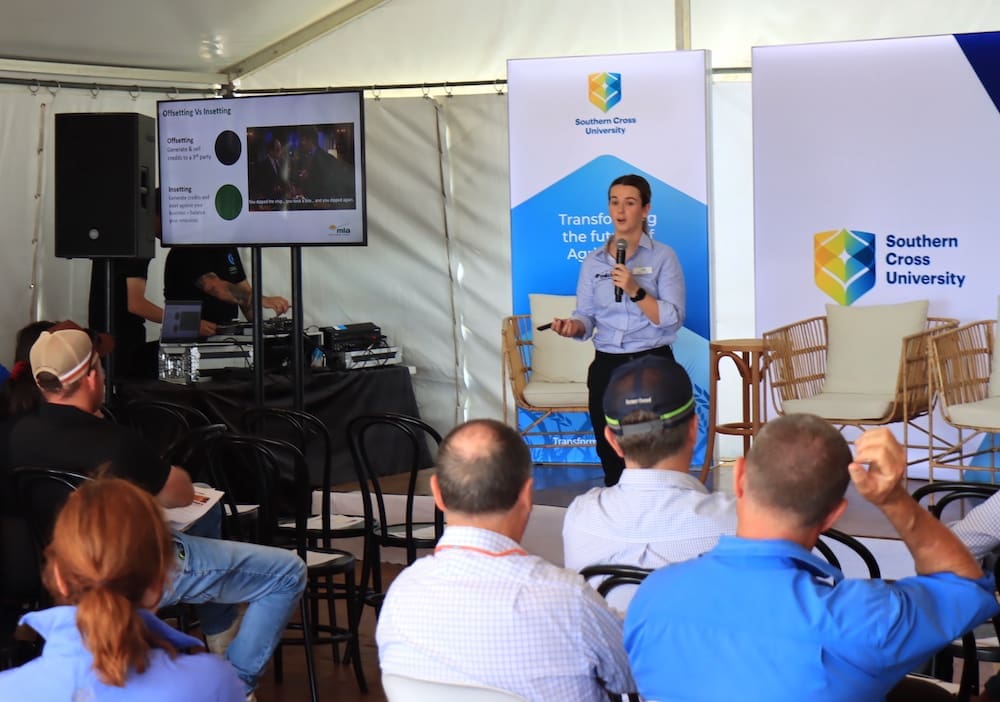
MLA Project Manager Environmental Markets Katelyn Lubcke addressing Beef Central’s carbon seminar at Primex, Casino, this morning.
FORMER US secretary of defence Donald Rumsfeld was talking about terrorism, but could just as easily have been referencing carbon farming when he made his famous “unknown unknowns” comment, moderator Kerry Lonergan mused when opening this morning’s Beef Central Carbon farming seminar at the Primex field days near Casino.
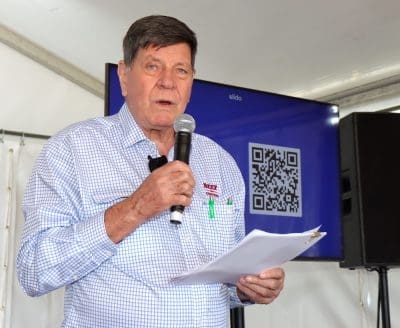
MC Kerry Lonergan
Asked in 2002 about the existence of Weapons of Mass Destruction in Iraq, Mr Rumsfield stated “There are known knowns — there are things we know we know. We also know there are known unknowns — that is to say, we know there are some things we do not know. But there are also unknown unknowns, the ones we don’t know we don’t know.”
A panel of three speakers helped local cattle producers in northern NSW to cut through some of that confusion and uncertainty during this morning’s seminar.
The Australian red meat industry has set a target of achieving Carbon Neutrality by 2030 – that is, a point where greenhouse gases sequestered by the industry match what is emitted.
About 59 percent of that goal has been achieved since 2005, Meat & Livestock Australia’s Katelyn Lubcke told this morning’s seminar, noting that a large part of that achievement has come from sequestering carbon in trees and soils as a result of State based restrictions preventing clearing of land.
The remaining 41 percent will rely on progress in a range of ways, including the development and uptake of technology such as methane inhibiting feed supplements which are showing significant promise in trials, but which still require practical and cost-effective delivery systems to be developed for extensive grazing systems.
Pathways will also involve strategies aimed at getting animals to grid weights more quickly, turning off animals faster and culling inefficient animals to reduce methane emissions.
The target was not about reducing Australia’s herd and flock numbers, which would exacerbate an increasingly serious global food security issue. It was also important that carbon from cattle not being the same as carbon from fossil fuels was recognised.
A digitised version of a carbon calculator for sheep and cattle producers will be released by MLA early next year.
Australian Feedbase Monitor set for national rollout this month
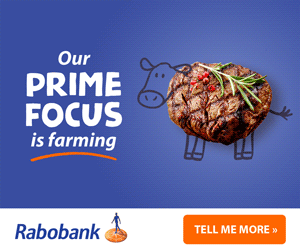 Another practical development for producers in this area is happening later this month with the formal launch of Australian Feedbase Monitor service by MLA and agricultural satellite and data analysis company CiboLabs.
Another practical development for producers in this area is happening later this month with the formal launch of Australian Feedbase Monitor service by MLA and agricultural satellite and data analysis company CiboLabs.
From next month every levy paying cattle producer in Australia who has also registered to be a member of MLA will receive immediate and free access to detailed ground cover maps of their properties.
The freely available maps producers will receive are produced by CiboLabs using satellite imagery every five days based on a 30 day rolling average down to a one hectare resolution (producers wishing to receive maps to a greater level of resolution will be able to do so through a paid subscription with CiboLabs).
Well-known genetics and production consultant Al Rayner, representing CiboLabs, told this morning’s summit that satellite imagery is far more powerful than “what you can see from the ute”.
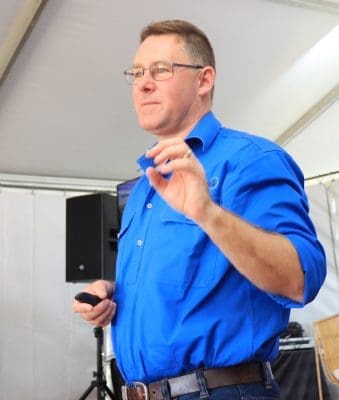
The overhead satellite maps will provide the capability to measure current total standing dry matter per hectare and how it compares to previous years, changes in woody cover over the past three decades, and seasonal ground cover.
While satellite imagery could not totally remove unplanned changes to stocking rates, it would remove at least some costly unplanned destocking decisions, and create greater opportunities to respond to positive pasture developments.
Rainfall gauges are often 20km-30km apart in many areas. They can’t pick up all of the showers that fall in between, but satellites can.
MLA members will be able to access the Australian Feedbase Monitor maps for their land holdings through the My MLA portal – more details will come with the launch of the project at the MLA updates forum in Toowoomba on November 30.
The ‘right reasons’
Wilmot Cattle Company at Ebor in NSW has been undertaking hundreds of soil core tests in the same locations on their properties every year for the past decade. Backed by that data it has changed its management style over that time from a fairly conventional, largely set-stocked strategy to stocking rates set to carrying capacity which build in rest for “the right amount of time at the right time”, focused on moving a small number of large mobs around frequently.
Last year Wilmot made international headlines when it sold $500,000 worth of carbon credits generated through its practice change to software giant Microsoft, arguably the single greatest catalyst for the surge of interest that has occurred in carbon farming in Australia the past two years.
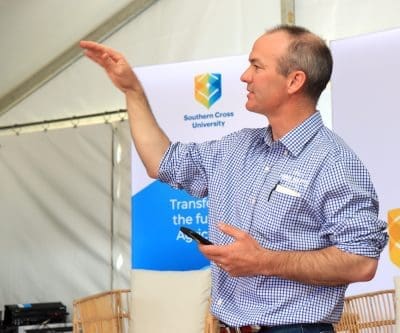 General Manager Stuart Austin (right) emphasised that the exercise was not about the money – it represented less than 5pc of its annual revenue for the year and the windfall was more of a ‘cherry on top’ – but about getting people to talk about soil carbon.
General Manager Stuart Austin (right) emphasised that the exercise was not about the money – it represented less than 5pc of its annual revenue for the year and the windfall was more of a ‘cherry on top’ – but about getting people to talk about soil carbon.
He said that as people started to focus on soil carbon they should do it for the “right reasons”, which included improving soil health, pasture diversity and quality – “Improve the diversity of your soil and pastures and you will be more ecologically and financially resilient”, he said.
Mr Austin said the big opportunity for Australia is to focus on building soil carbon down to a metre, rather than the current 15cm approach, which urgently requires R&D investment.
Mr Austin emphasised that the exercise was not about the money – it represented less than 5pc of its annual revenue for the year and the windfall was more of a ‘cherry on top’ – but about getting people to talk about soil carbon.
He said that as people started to focus on soil carbon they should do it for the “right reasons”, which included improving soil health, pasture diversity and quality – “Improve the diversity of your soil and pastures and you will be more ecologically and financially resilient”, he said.
Mr Austin said the big opportunity for Australia is to focus on building soil carbon down to a metre, rather than the current 15cm approach, which urgently requires R&D investment.

